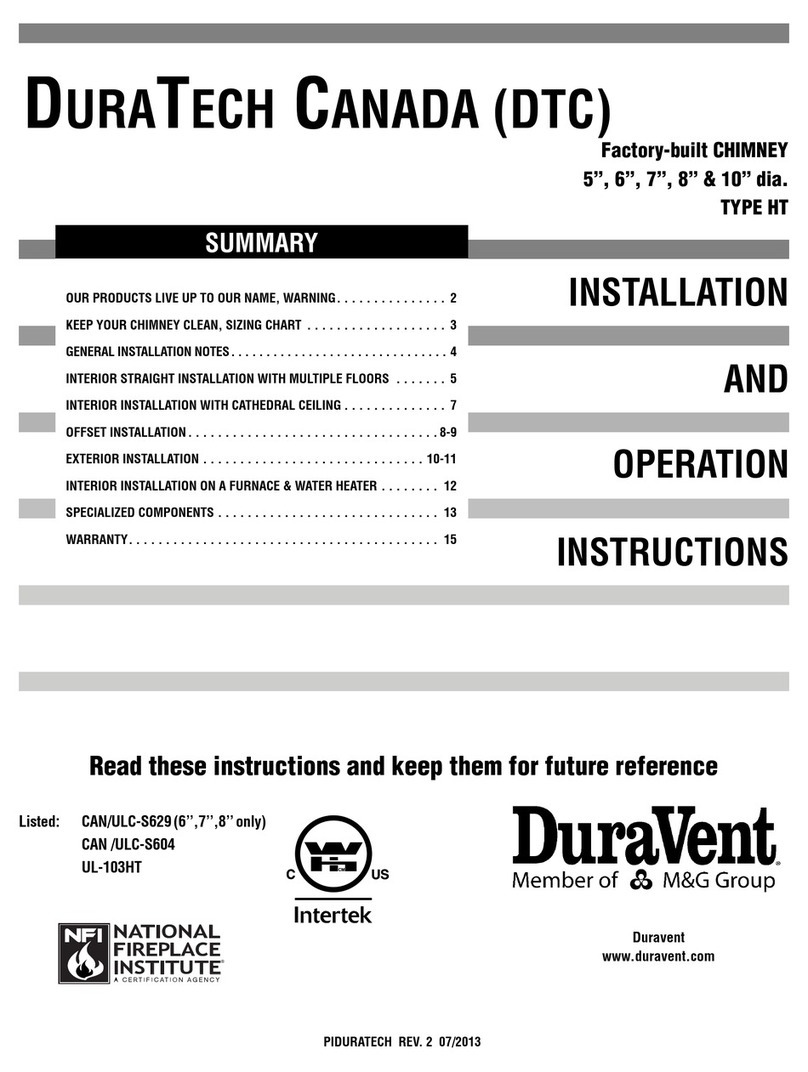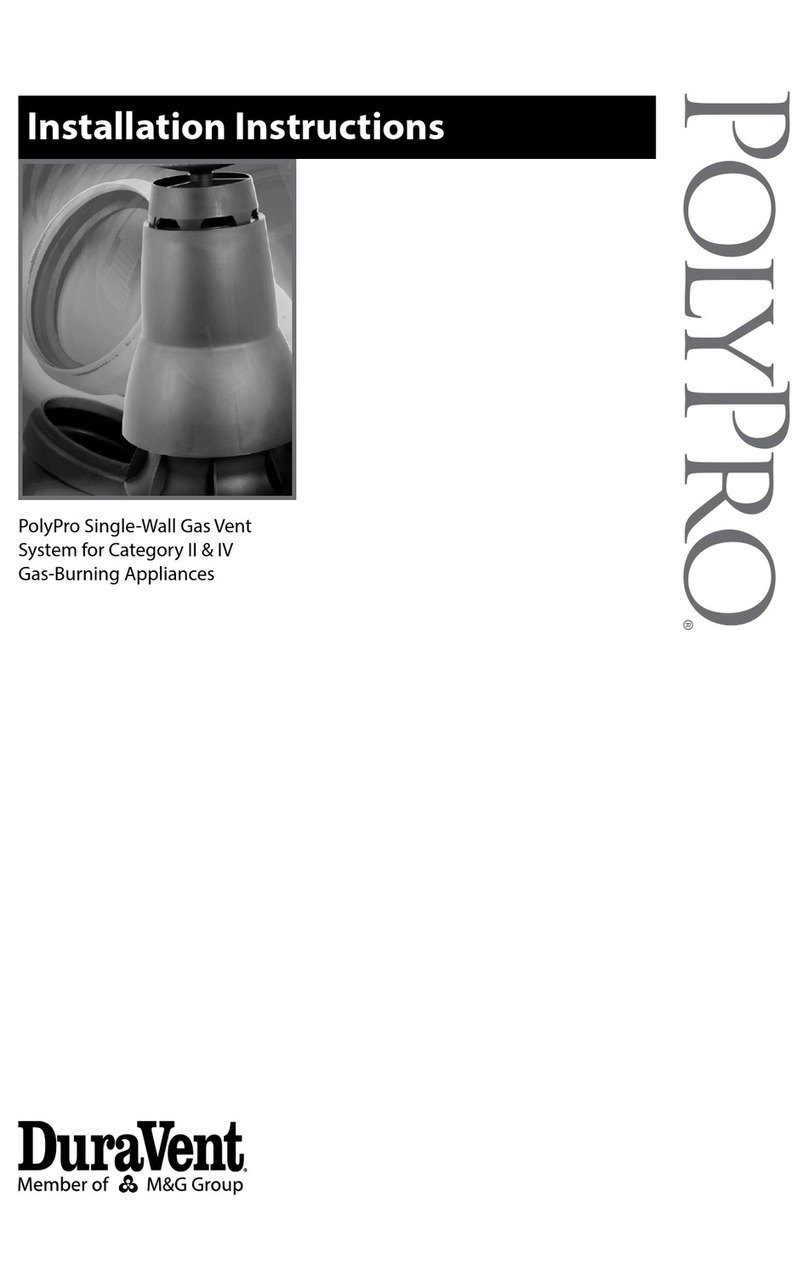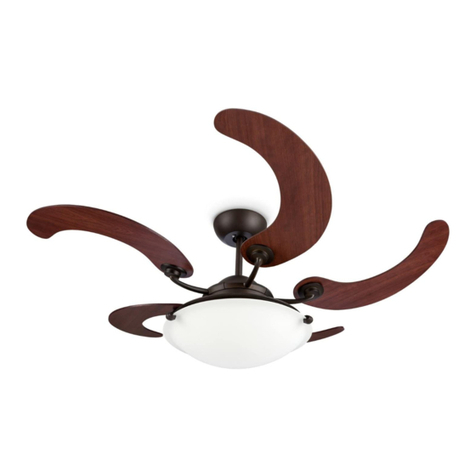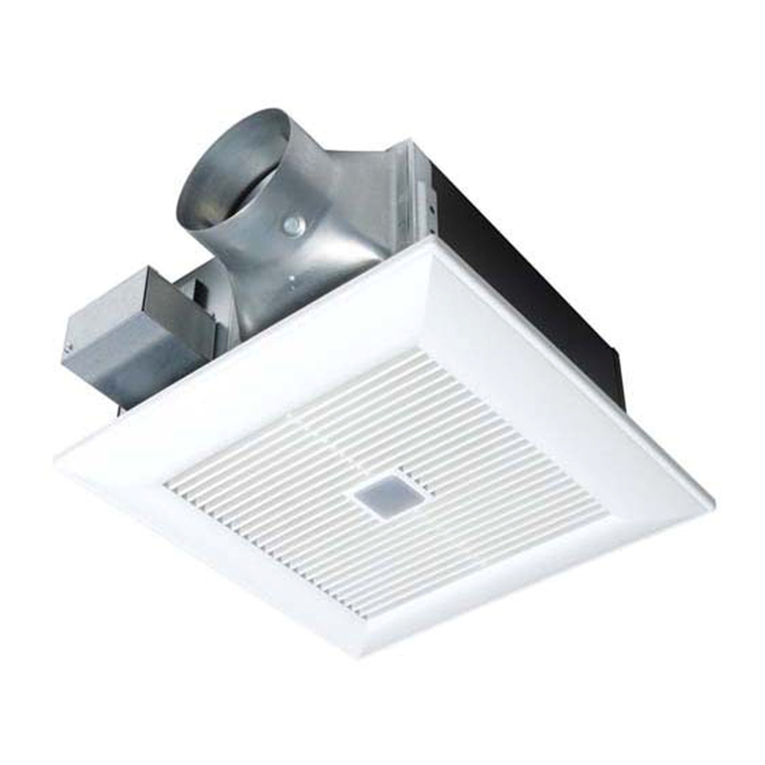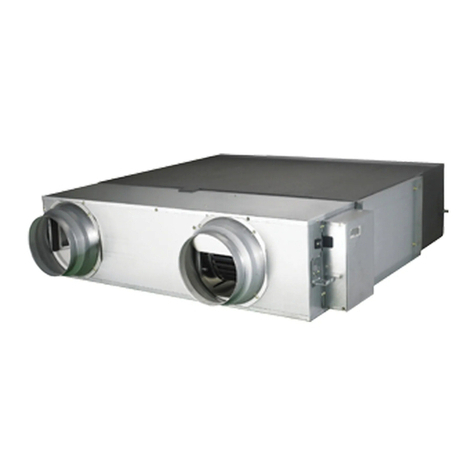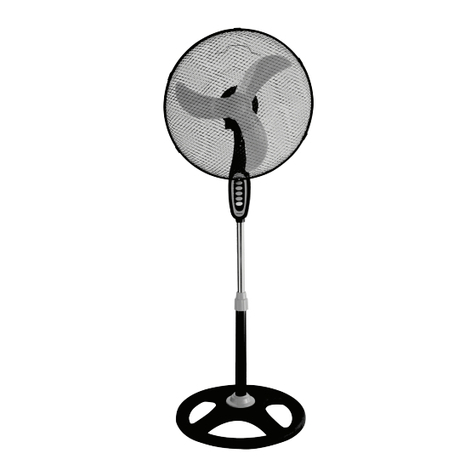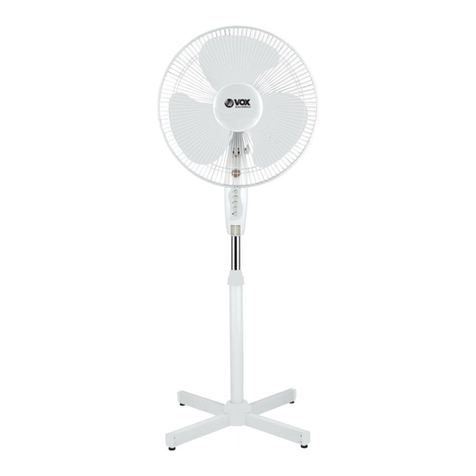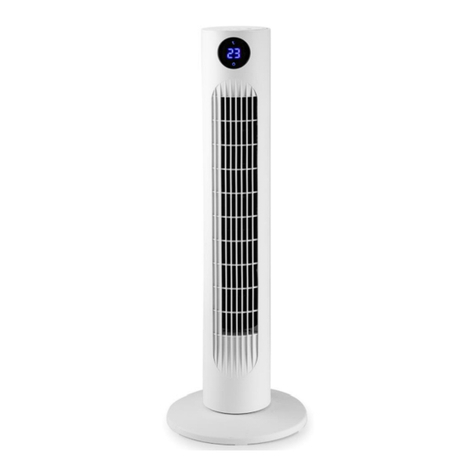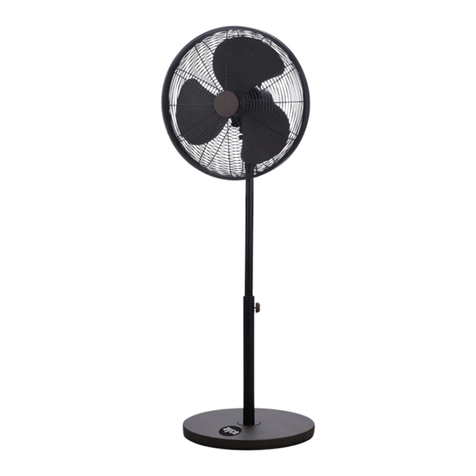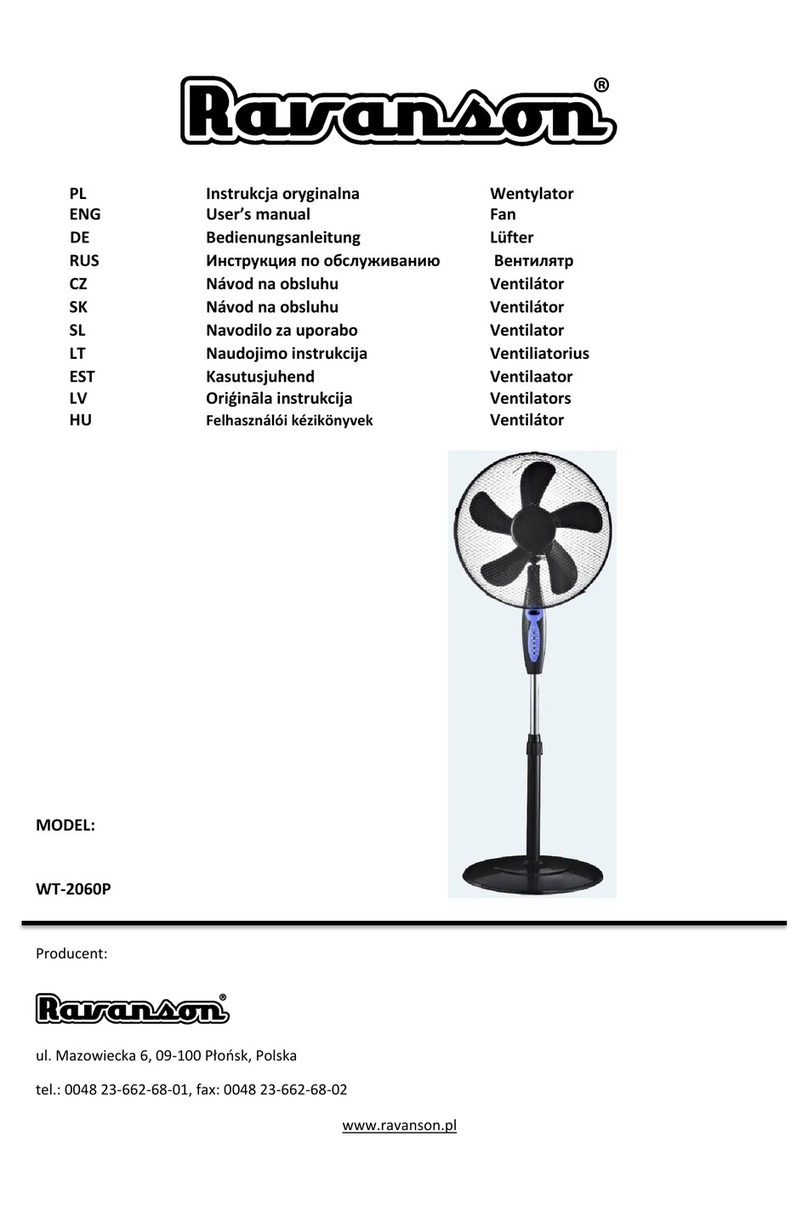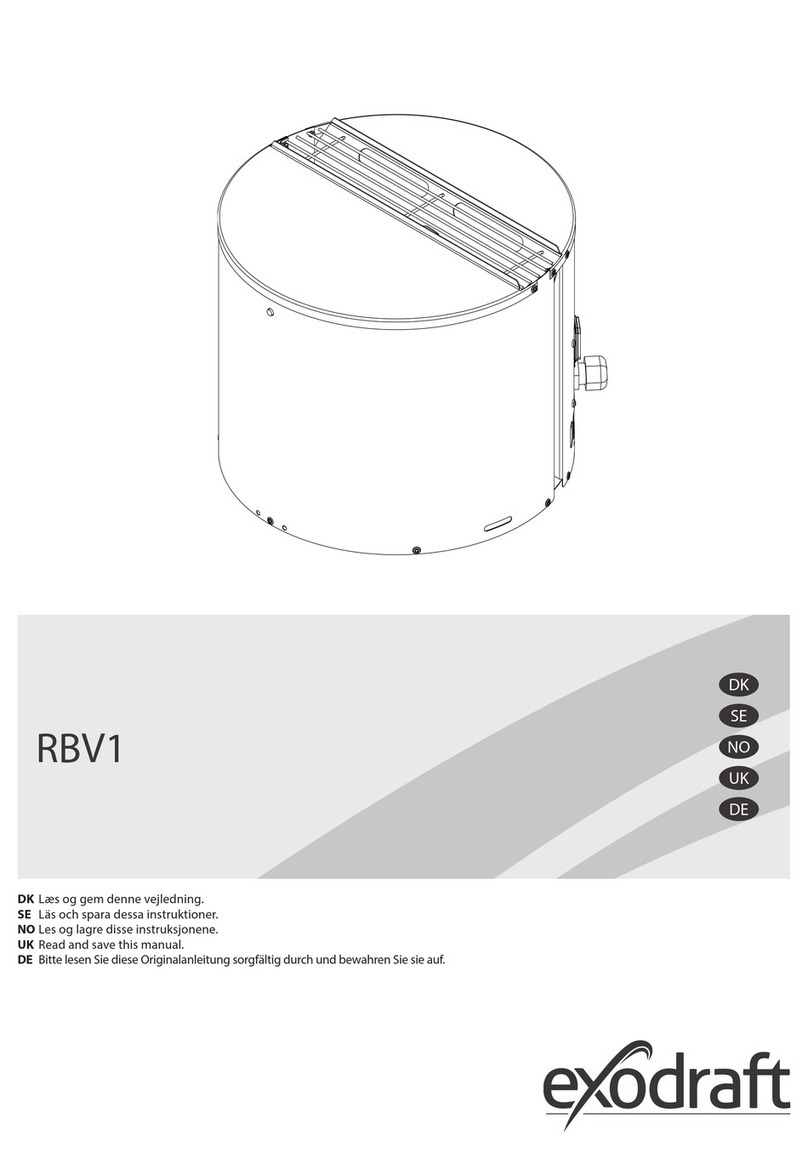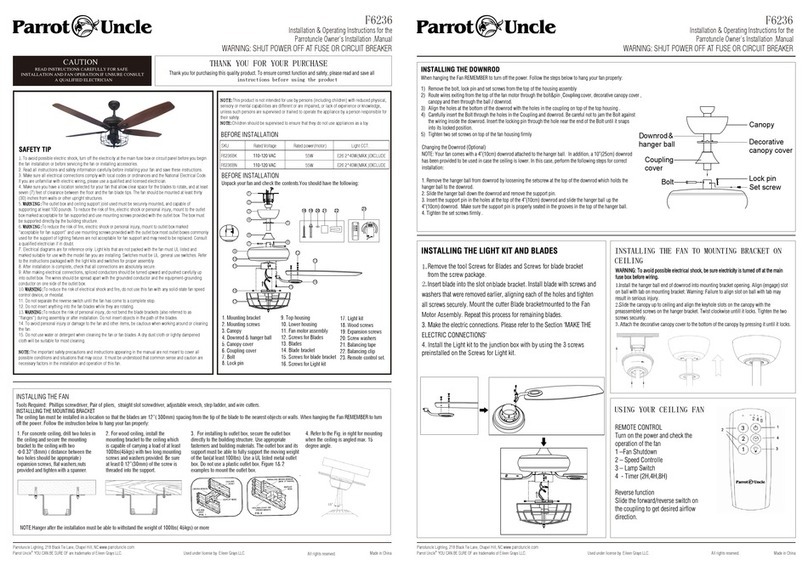M&G DuraVent PolyPro User manual

PolyPro
®
Installation Instructions
PolyPro Single-Wall Gas Vent
System for Category II & IV
Gas-Burning Appliances

A MAJOR CAUSE OF VENT RELATED FIRES IS FAILURE
TO MAINTAIN REQUIRED CLEARANCES (AIR SPACES) TO
COMBUSTIBLE MATERIALS. IT IS OF THE UTMOST IMPORTANCE
THAT POLYPRO® BE INSTALLED ONLY IN ACCORDANCE WITH
THESE INSTRUCTIONS.
Dear Customer, Installer, or End User:
We welcome any comments regarding
matters pertaining to our DuraVent products.
We welcome any ideas, input or complaints
to help improve our product oering. Send
your emails to:
president@duravent.com
If you are searching for tech support or
product information, please phone us at
800-835-4429.
Or email us at:
• Examine all components for possible
shipping damage prior to installation
• Proper joint construction is essential
for a safe installation. Follow these
instructions exactly as written.
• This venting system must be free to
expand and contract.
• This venting system must be supported
in accordance with these instructions.
• Check for proper joint construction
when joining pipe to ttings.
• Check for unrestricted vent movement
through, walls, ceilings, and roof
penetrations.
• Dierent manufacturers have dierent
joint systems and adhesives. Do not mix
pipe, ttings or joining methods from
dierent manufacturers.
WARNING
IMPORTANT
Risk of carbon monoxide poisoning
or re due to joint separation or pipe
breakage.
Read through all of these instructions
before beginning your installation. Failure
to install this product as described in these
instructions will void the manufacturer’s
warranty, may create a re or other safety
hazard, and may aect your homeowner’s
insurance and safety listing of your appliance.
Keep these instructions for future
reference.
PolyPro® is one of M&G DuraVent's GreenVent®
line of products.
WARNING
CARBON MONOXIDE POISONING
HAZARD. Failure to follow the steps
outlined below for each appliance
connected to the venting system being
placed into operation could result in
carbon monoxide poisoning or death.

3
PolyPro Single-Wall Gas Vent System
For the most up-to-date installation instructions, see www.duravent.com
PolyPro
®
CONTENTS
APPLICATION. . . . . . . . . . . . . . . . . . . . . . . . . . . . . . . . . . . . . . . . . . . .. . . . . . . . . . . 4
CLEARANCES . . . . . . . . . . . . . . . . . . . . . . . . . . . . . . . . . . . . . . . . . . . .. . . . . . . . . . . 4
PERMITS . . . .. . . . .. . . . . . . . . . . . . . . . . . . . . . . . . . . . . . . . . . .. . . . . . . . . . . . . . . . . 4
EQUIPMENT AND MATERIALS. . . . . . . . . . . . . . . . . . . . . . . . . . . . . .. . . . . . . . . .. . . . 4
GENERAL INSTALLATION NOTES. . . . . . . . . . . . . . . . . . . . . . . . . . . . . . . . . . . . . . 4
JOINT CONNECTIONS. . . . . . . . . . . . . . . . . . . . . . . . . . . . . . . . . . . . . . .. . . . . . . . . .. . . . 6
INSTALLATION . . . .. . . . .. . . . . . . . . . . . . . . . . . . . . . . . . . . . . . . . . . .. . . . . . . . . . . 8
HORIZONTAL TERMINATIONS . . . . . . . . . . . . . . . . . . . . . . . . . . . . . . . . . . . . . . . . . . . 9
ELBOW OR TEE TERMINATIONS . . . . . . . . . . . . . . . . . . . . . . . . . . . . . . . . . . . . . . . . .13
VERTICAL TERMINATIONS . . . . . . . . . . . . . . . . . . . . . . . . . . . . . . . . . . . . . . . . . .13
CONDENSATE DRAIN . . . . . . . . . . . . . . .. . . . . . . . . . . . . . . . . . . . . . . . . . . . .. . . .15
MAINTENANCE . . . . . . . . . . . . . . . . . . . . . . . . . . . . . . . . . . . . . . . . . . . . . . . . . . .15
WARRANTY. . . . . . . . . . . . . . . . . . . . . . . . . . . . . . . . . . . . . . . . . . . . . . . . . . . . . . . . . .16

4
APPLICATION
M&G DuraVent’s PolyPro vent pipe is a single-
wall polypropylene gas vent for use with ANSI
Category II and IV gas-burning appliances.
PolyPro is listed by Intertek to the ULC S636
standard in Canada and is rated as a Class IIA,
IIB, and IIC vent system suitable for exhaust
temperatures up to 230°F (110 °C), and a
maximum positive pressure of 15 in-w.c.
Check with your appliance manufacturer or
look in the appliance installation instructions
to verify that M&G DuraVent’s PolyPro Vent is
allowed for use with your appliance. PolyPro
is approved by the Massachusetts Plumbers
Board, Approval G1-0811-42.
CLEARANCES
PolyPro single-wall vent system is listed at
0" clearance to combustibles for exhaust
temperatures up to 194°F (90 °C). In addition,
PolyPro single-wall vent system is listed
for exhaust temperatures up to 230°F
(110°C) with 0" clearance for vertical vent
installations, and 1/4" (6mm) clearance
for horizontal vent installations. PolyPro
Concentric vent system parts, including the
concentric Horizontal Termination and the
Vertical Termination, are listed at 0” clearance
to combustibles for exhaust temperatures
up to 230°F (110 °C) for both vertical and
horizontal installations. Refer to Table 1.
Check with your appliance manufacturer if
larger clearances are required. Do not ll any
air space clearances with insulation.
PERMITS
Before installation, check with your local
Building Ocial, Fire Ocial, or other
authority having jurisdiction regarding
permits, restrictions, and installation
inspections in your area.
EQUIPMENT AND MATERIALS
Hammer
Drill
Pliers or Channel Locks
Caulking Gun
Plumb Bob
Screwdrivers (Phillips & Standard)
Tin Snips
Saber or Keyhole Saw
Level
Dependable Ladder
Tape Measure
Proper Gloves and Shoes
Eye Protection
Materials You May Need:
500 RTV Silicone Sealant (used to seal
exterior building penetrations to protect
against weather)
8 Penny Nails
#8, 1-1/2” Wood Screws
Roong Nails
GENERAL INSTALLATION NOTES
Read through these installation instructions
before beginning your installation. A
properly listed installation is dependent
upon installing the vent in full compliance
with these installation instructions. Proper
planning for your PolyPro vent system
installation will result in greater safety,
eciency, and convenience, as well as
saving time and money. You must use only
authorized M&G DuraVent PolyPro vent
parts, or other parts specically authorized
in these instructions and listed by the
appliance manufacturer in order to maintain
a safe, approved system. Do not mix parts
or try to match with other products or use
Table 1
Clearance to Combustibles
VENT PIPE ORIENTATION
Single Wall Vertical Horizontal
Up to 190°F 0" 0"
Up to 230°F 0" ¼" (6mm)
Concentric
Up to 230°F 0" 0"
1-ft Vent Pipe 1-ft
1-ft Flex Pipe 2-ft (same Dia as
rigid)
1-ft Flex Pipe 0.6-ft (upsized one
Dia)
45 Elbow 3-ft
90 Elbow 6-ft
Tee 6-ft

5
improvised solutions. Do not install damaged
or modied parts. Do not use any solvents or
adhesives with PolyPro pipe, other than as
specied in these instructions. Practice good
workmanship. Sloppy work could jeopardize
your vent’s safety. Keep electrical wiring and
building insulation away from all chimneys
and vents. When deciding the location of
your installation, try to avoid modications
to structural components of the building. If
these directions and those of the appliance
manufacturer dier, follow the more
conservative requirements. If you have any
questions, contact either your dealer or M&G
DuraVent directly.
Refer to the appliance manufacturer for the
maximum and minimum allowed vent runs
for your specic appliance model, including
maximum number elbows allowed in the
system, and for the pressure drops and
equivalent length of the ttings. The total
vent length from the appliance to the
termination shall not be greater than what
is specied by the appliance manufacturer.
Absent specic equivalent length info
for vent ttings from the appliance
manufacturer, the following general
guidelines can be used:
IMPORTANT
The vent system must terminate in
accordance with local code requirements
and appropriate National Codes:
In the US: NFPA 54 / ANSI Z223.1 National
Fuel Gas Code or the International Fuel
Gas Code.
In Canada: CAN/CGA-B149.1 Natural
Gas Installation Code or CAN/CGA-149.2
Propane Installation Code.
IMPORTANT
To prevent possible recirculation of
ue gas, the installer must take into
account the eects such as the prevailing
wind conditions, any eddy zones,
environmental conditions, etc. when
planning both the exhaust and air supply
systems.
M&G DuraVent can not be held
responsible for potential detrimental
eects on appliance operation or to the
building due to incorrect installation or
failure to plan for the specics needs of
the installation. The clearances detailed
or illustrated should be seen as the
absolute minimum and may in some
circumstances not be adequate for
specic installations. For this reason we
always recommend vertical venting.
Equivalent Length Chart
Component Equivalent Length
1-ft Vent Pipe 1-ft
1-ft Flex Pipe 2-ft
(same diameter as rigid)
1-ft Flex Pipe 0.6-ft
(updsized one diameter)
45 Elbow 3-ft
90 Elbow 6-ft
Tee 6-ft
Plan the layout of the vent system:
Consider the length of horizontal runs,
elbows, clearance requirements, and location
of terminations.
For horizontal vent runs, always maintain
at least a 5/8” rise per foot (50mm rise per
1m) away from the appliance to prevent
collection of condensate or buildup of heat
in the vent.
Consider condensate drainage. Refer to
the appliance manufacturer’s installation
instructions for requirements of
condensate drainage.
Normal operation of gas burning appliances
does not result in deposits of combustible
soot in venting systems. However, a poorly

rotate 360-degrees to allow elbows to point
in the desired direction. The PolyPro vent
pipe lengths may be cut to achieve specic
lengths. Alternatively, an Adjustable Pipe
adjusted or malfunctioning appliance
can deposit soot and other debris which
can enter the vent system. Any such
accumulation should be removed and the
appliances adjusted to eliminate future
accumulation. Use only a soft brush for
cleaning the sections and ttings. If any
leakage is found at joints the connected
appliances should be turned o and the
leaks repaired. A venting system must
not be routed into, through, or within any
other vent, such as an existing masonry or
factory-built chimney ue, unless that vent
or chimney is not being used to vent another
appliance and is only used as a conduit for
the gas-vent system.
Plastic venting systems shall not pass
through re rated separations.
JOINT CONNECTIONS
M&G DuraVent’s PolyPro vent is connected
together by slipping the male pipe end into
the female end (Figure 1) with about 2"
(50mm) of overlap. PolyPro vent products
have gaskets installed in the female pipe
ends. Before connecting the vent pipe
sections or components, verify the gasket
is seated evenly inside the groove in the
female end. The PolyPro joint section can
WARNING
CARBON MONOXIDE POISONING
HAZARD. FAILURE TO FOLLOW THESE
INSTALLATION INSTRUCTIONS COULD
RESULT IN PERSONAL INJURY OR
DEATH.
Figure 1
VERIFY GASKET IS
SEATED IN FEMALE
END OF PIPE
MALE END
FEMALE END
length that slips into the previous vent
pipe section is also available. Screws are
not allowed for joint connection. Never
penetrate the wall of PolyPro vent pipe
sections.
A Locking Band is required at every exhaust
vent joint, and optional for the air inlet vent
joints. To attach the Locking Band, slide it
over the male end of the pipe with the hook
and leg facing the joint. Push the male and
female ends together as described in these
instructions, and snap the hook in place over
the ared female end. To release the Locking
Band, pry the hook up. If the Locking Band
is installed at a joint where the Wall Strap
is used, align the Locking Band's hook with
the gap of the Wall Strap. The Locking Band
meets ULC S636 requirements for securing
the joint. In addition, supporting Wall Straps
are required at least every 10 feet (3 meters)
for vertical vent pipe sections, and horizontal
or sloped sections of vent pipe require one
supporting Wall Strap for each pipe section.
(Figure 2).
There are two options for Wall Straps: the
polypropylene snap-clamp style, and the
metal bolt-clamp style. (Figure 2, 3A & 3B)
Both options are approved and listed for
use with PolyPro. The polypropylene Wall
Strap can be attached at either the female
end of the pipe or on the body of the vent
pipe. Determine the location where the Wall
Strap’s anchor bolt will mount into the wall
6

7
or framing member. Mount the anchor bolt
into the wall at that location. Install the body
of the Wall Strap onto the anchor bolt by
rotating the body of the Wall Strap with the
encapsulated nut, onto the threads of the
anchor bolt. Do not over tighten. When the
PolyPro vent is in place, secure the Wall Strap
around the vent pipe by closing the clamp.
The metal Wall Strap can only be mounted
on the body of the vent pipe. Slide the metal
Wall Strap around the body of the PolyPro
vent pipe, or open the clamp to wrap around
the pipe. When the vent pipe is in place,
secure the metal Wall Strap to the nearby
CAUTION
Caution: Do not use grease or other
lubricant on the vent seals. Only water
may be used for this purpose. Grease or
other lubricant can make the seal brittle
or it can result in tears in the surface of
the seal, this will result in ue
gas leakage.
Figure 2
ALTERNATE
WALL STRAP
DESIGN
AVAILABLE
WALL STRAP ACTING AS
SUPPORT WITH ANCHOR
BOLT MINIMUM 1P ER
HORIZONTAL PIPE SECTION
LOCKING BANDS
REQUIRED AT EVERY
EXHAUST JOINT
MAX
10FT
3m
Figure 3A
PUSH DOWN TO
ENGAGE LOCK
PRY OUT
TO UNLOCK
Figure 3B
ALIGN HOOK TO GAP WHEN
INSTALLING AT JOINT WITH
WALL STRAP
SECURE ANCHOR BOLT
TO NEARBY WALL OR
STRUCTURAL MEMBER TO
SUPPORT VENT SYSTEM
WALL STRAP CAN BE
INSTALLED ON FEMALE END
OR BODY OF PIPE
ALIGN WALL STRAP WITH
KEYWAY WHERE INSTALLED
ON FEMALE END

8
wall or structural member using (2) 1-1/2” #8
wood screws or equivalent. Secure the Wall
Strap around the vent pipe by tightening the
nut and bolt of the clamp.
INSTALLATION
1. Connect PolyPro vent pipe to the
appliance. Use the Appliance Adapter/ PVC
Adapter and Clamp to connect PolyPro vent
to the appliance. Slide the male end of the
Appliance Adapter into the appliance outlet.
Place the Appliance Adapter Clamp over
the Appliance Adapter and then slide the
male end of the PolyPro vent pipe into the
Appliance Adapter. Tighten both hose clamps
on the Appliance Adapter Clamp to ensure
the connection is secure (Figure 4).
If the appliance has a rubber boot or Fernco-
style appliance adapter on its outlet, then the
PolyPro vent pipe may attach directly to the
rubber coupler adapter or Fernco adapter
without needing the Appliance Adapter,
by tightening the clamping bands (Figure
4A). Additionally, the Appliance Adapter/
PVC Adapter can be used to transition from
PVC vent pipe to PolyPro, if needed. Install
the vent pipe system with the female end
(with the internal gasket) up, away from
the appliance. The Appliance Adapter is
designed to provide a drip-free connection
for most appliance outlets. If the appliance
has a PVC union for its outlet, the Appliance
Adapter also functions as a PVC Adapter to
transition from PVC to PolyPro pipe (Figure
4). The PVC Adapter requires a standard
PVC union to make the transition to PolyPro
pipe; if a straight length of PVC pipe is on
the appliance outlet, add a PVC union before
connecting the Appliance Adapter. Secure
the connection by tightening the hose
clamps on the Appliance Adapter Clamp.
2. Check that the gasket is retained correctly
in the groove.
3. Add additional sections of PolyPro vent
APPLIANCE
OUTLET
POLYPRO
VENT PIPE
TIGHTEN CLAMPS ON
RUBBER COUPLER
ADAPTER OR FERNCO
STYLE ADAPTER TO
SECURE VENT
PIPE TO APPLIANCE
Figure 4A
pipe for your installation. Be sure to check
with your appliance manufacturer for any
restrictions or limits on vent length, number
of elbows, etc.
4. If PolyPro vent pipe needs to be cut, be
sure that the vent is cut square (not at an
angle) to the end of the pipe and that burrs
are removed before assembly.
5. Take precautions with horizontal
installation, the slope of the vent pipe must
Figure 4
POLYPRO PIPE
APPLIANCE
ADAPTER CLAMP
APPLIANCE
ADAPTER/PVC
ADAPTER
APPLIANCE
EXHAUST
OUTLET OR
PVC UNION
ALIGN WALL
STRAP WITH
KEYWAY WHERE
INSTALLED ON
FEMALE END
APPLIANCE

9
Figure 6
be at least 5/8" rise per foot (50mm rise per
1m) away from the appliance, (Figure 5).
6. For each vent joint, a Locking Band is
needed. Refer to the Joint Connection section
above. Additionally, Wall Straps are required
to support the overall vent run. To support
the vent run, mount Wall Straps on a nearby
wall
or other xed structure of the building:
6a. Straight vent sections that are installed
vertical must be supported with Wall Straps
every 10 feet (3 meters) or less, (Figure 2).
6b. Straight vent sections installed with a slope
must be supported with at least one bracket
per section.
6c. Elbows and Tees are suciently supported
when a bracket is xed at the female end of the
connected straight section as described in 6b.
7. To make installation easier, it is
recommended to rotate the joints slightly
when assembling them. If needed, only
use water to lubricate the gaskets for easier
assembling.
8. Make sure that the load of the vent system is
not supported by the appliance.
9. Because of the elongation at high exhaust
temperatures the pipes must be inserted and
joined according to Figure 6. The allowed
length of elongation must be between ¼” and
5/8” (7.5 - 15 mm) per joint.
10. Continue with either the Horizontal
Termination Section or the Vertical Termination
section, depending on your installation.
HORIZONTAL TERMINATIONS:
For PolyPro vent systems ending in a
horizontal termination, follow these steps:
1. Determine your location through the wall.
Verify your location meets the requirements
for horizontal terminations as described
in all applicable building codes and your
appliance’s installation instructions. In the US
Figure 5
12"
5/8"
MIN
be sure to comply with NFPA 54/ANSI Z223.1
National Fuel Gas Code or the International
Fuel Gas Code. In Canada, comply with CAN
/CGA-B149.1 Natural Gas Installation Code
or CAN /CGA -149.2 Propane Installation
Code. In addition to meeting applicable
building codes and appliance manufacturer
requirements, M&G DuraVent requires at
least 12" of separation between the air inlet
and exhaust. However for specic appliance
recommendations please refer to the OEM’s
Installation Instructions. This does not apply
to Twin Pipe and Concentric Terminations.
2. Determine which horizontal termination
you will use. PolyPro oers three dierent
engineered terminations to handle dierent
installation situations: concentric Horizontal
Termination, the Twin Pipe Termination,
and the Single Horizontal Termination. In
addition, PolyPro vent can also be terminated
using black, UV-resistant pipe, elbows, or a
tee as described below.
The concentric Horizontal Termination
(Figure 7) is specically designed and
1/4" 5/8"
7.5mm 15mm

10
engineered to handle wind loads and
backpressure. Refer to Table 2 for the size of
the hole in the wall needed for the dierent
diameter terminations.
The Twin Pipe Termination is a side-by-side
(collinear) vent system for the exhaust and
the air inlet (Figure 8). For the Twin Pipe
Termination, the penetration must be either
two holes for each of the exhaust and air
inlet pipes or a rectangular opening to
handle both. Clearance to combustibles is
only required on the exhaust side of the Twin
Pipe Termination. Refer to Table 2 for hole
sizes. Remember to maintain the necessary
clearance to combustibles. The Twin Pipe
Termination can be positioned in either a
horizontal (side-by-side) or vertical (one pipe
above the other) orientation (Figure 8).
The Single Horizontal Termination can be
used for the appliance’s exhaust if a vented
air inlet is not required for your appliance
(Figure 9). Refer to Table 2 for the necessary
hole size through the wall. Remember
to maintain the necessary clearance to
combustibles.
3. Once you have determined the type of wall
termination, selected the location and cut the
hole as described, then install your horizontal
termination as follows:
Concentric Horizontal Termination: Slide
the Exterior Wall Plate over the exterior end
of the Concentric Horizontal Termination
until it stops. From the outside, slide the
Termination through the wall penetration
until the Exterior Wall Plate reaches the wall
(Figure 10). The Exterior Wall Plate helps to
hold the Termination in place and ensures
the Concentric Horizontal Termination is
in the correct position for proper wind
performance. If needed for your installation,
the interior end of the Concentric Horizontal
Termination can be cut to length, as long as it
extends through the wall. Be sure to remove
any burrs after cutting. The Concentric
Horizontal Termination must be installed
either level or with a maximum downward
pitch of 1/8” per foot (10 mm per meter) away
from the appliance. To prevent rainwater
from entering the air inlet system, ensure
the Termination is installed correct side up
(Figure 7). Using RTV silicone sealant, mount
and seal the Exterior Wall Plate to the wall
and secure it with the hardware provided. On
the interior wall, slide the Interior Wall Plate
over the Concentric Horizontal Termination
and secure to the interior wall with supplied
hardware. Then secure the Interior Wall
Plate to the Termination pipe itself using the
Table 2
PolyPro Wall Penetration Sizing Table
VENT DIAMETER
Termination 2" 3" 4"
CONCENTRIC HORIZONTAL
(ROUND OR SQUARE)
4 ⁄"
105mm
5 ⁄"
130mm
6 ⁄"
155mm
TWIN PIPE HORIZONTAL
CLASS IIB
7 ⁄" x 2⁄"
187mm x 65mm
8 ⁄" x 3⁄"
212 x 85mm
9" x 4⁄"
228 x 100mm
TWIN PIPE HORIZONTAL
CLASS IIC
8" x 3"
200 x 77mm
8 ⁄" x 3⁄"
225 x 98mm
9 ⁄" x 4 ⁄"
238 x 112mm
SINGLE HORIZONTAL (ROUND OR SQUARE)
CLASS IIB \ CLASS IIC
2⁄" / 3"
65mm / 77mm
3 ⁄" / 3 ⁄"
85mm / 98mm
4" / 4 ⁄ "
100mm / 112mm

11
supplied sheet metal screws through the
four tabs on the wall plate. Once in place, the
Horizontal Termination should not be able to
move. If the appliance requires a two-pipe
system (exhaust and air inlet) then you will
need to connect the Collinear Adapter that
came with the Termination. For the Collinear
Adapter, assemble the two gaskets that came
with the Adapter. Verify the exhaust side is
the side that passes through the Collinear
Adapter and the air inlet side connects to the
o center stub on the Adapter (Figure 10).
Twin Pipe Termination: Mount the Exterior
Wall Plate of the Termination on the outside
wall, using RTV silicone sealant between the
plate and the wall to prevent rain inltration
(Figure 11). Secure the back plate in place
with (4) 1-1/2” wood screws or appropriate
hardware for your exterior wall. From the
outside, apply a bead of silicone sealant
around the female end of the pipe where the
plate will meet the ared end (Figure 11).
This is needed to weatherize the connection.
Then slide the two PolyPro vent pipe section
into the holes of the Exterior Wall Plate
(male end rst). Twist the pipe so the female
end’s keyway slides past the Exterior Wall
Plate as shown. If needed, the PolyPro vent
pipe sections can be cut to length for your
Figure 7
INTERIOR WALL
PLATE
EXTERIOR WALL
PLATE
CONCENTRIC
HORIZONTAL
TERMINATION
Figure 8
POSITIONED
HORIZONTALLY
POSITIONED
VERTICALLY
Figure 9
INTERIOR
WALL PLATE EXTERIOR
WALL PLATE
GASKET
SINGLE
HORIZONTAL
TERMINATION
Figure 10
COLINEAR
ADAPTER
EXHUAST
APPLIANCE
AIR INLET
CONCENTRIC
HORIZONTAL
TERMINATION

12
section through the Exterior Wall Plate
and align the mounting holes of the vent
pipe with the tabs of the Exterior Wall Plate
(Figure 12). Secure the termination vent
to the wall plate’s tabs with the black sheet
metal screws provided. Do not over-tighten
the screws. Add RTV silicone sealant around
the perimeter of the wall plate for weather
protection. Mount the Exterior Wall Plate
to the exterior wall with (4) 1-1/2” screws or
other hardware appropriate for your wall. If
you live in an area where icing is a concern,
be sure to orient the Single Horizontal
Termination so it is pointed upward. This will
prevent icicles from forming on the end of
the cap and will allow rain to enter the vent,
thereby diluting the acidic condensate.
Figure 12
IMPORTANT
If the cap is installed so rain can enter the
cap, a condensate drain with a U-bend
or P-trap made of corrosion resistant
material must be used in the vent system
and/or the appliance must be able to
manage the condensate as directed in
the appliance manufacturer's installation
instructions.
Figure 11
installation. On the exhaust vent, attach
the termination nozzle, and orient it so the
protruding edge is at the top of the exhaust
vent. Put the Outer Cover Plate over the vent
pipe, with the exhaust nozzle extending
through the Outer Cover Plate, and the air
inlet being covered by it. The Outer Cover
Plate will hold both the air inlet vent and the
exhaust vent in place. Secure the Outer Cover
Plate to the Exterior Wall Plate using the
hardware supplied. On the inside wall, mount
the Interior Wall Plate to the wall and secure
with hardware supplied.
Single Horizontal Termination: Mount
the gasket material into the black-painted
Exterior Wall Plate. If needed, the termination
vent pipe can be cut depending on your
wall thickness. Slide the termination vent
INTERIOR WALL
PLATE
EXTERIOR WALL
PLATE
EXHAUST PIPE
OUTER COVER
PLATE
AIR INLET PIPE
APPLY BEAD OF SILICON SEALANT
AROUND FEMALE END TO SEAL
AGAINST EXTERIOR WALL PLATE
ALIGN TABS WITH
MOUNT HOLES

13
If you are not in an area where icing is a
concern, directing the termination downward
is permissible. On the inside wall, mount the
Interior Wall Plate to the wall and secure with
hardware supplied.
ELBOW OR TEE TERMINATION:
In addition to the engineered horizontal
terminations described above, the installer
may also use UV-resistant, black vent
pipe lengths, elbows, and tees to form a
termination (see Figure 13). Do not use the
gray non-UV protected pipe as a horizontal
termination, except in combination with
the engineered horizontal terminations
described above.
For the terminations, elbows may be
used in either a 45-degree, or 90-degree
conguration. A Tee may also be used as
the termination, but must remain horizontal
as shown in Figure 13. If an air-inlet is part
of the termination, ensure the air-inlet will
not let the exhaust recirculate back into
the system. Make sure the air-inlet will not
have rain entering the system by keeping
the inlet pointing downward. Check with
your appliance manufacturer for additional
termination requirements or restrictions,
and follow all local and national code
requirements for the location of
your terminations.
4. Once the Horizontal Termination is in place,
complete the installation using sections of
PolyPro vent pipe between the appliance and
the Termination. Secure with Wall Straps and
Locking Bands at the joints as described in
the Joint Connection section.
VERTICAL TERMINATIONS:
For PolyPro vent installations ending in a
vertical termination, the vent system must
terminate at least 2 feet above the roof line or
Figure 13
CONDITIONED SPACE
PROVIDE SUPPORT
EVERY 6FT 2m
ALTERNATE
HORIZONTAL TEE
90° ELBOW OR
HORIZONTAL TEE
12" ABOVE GRADE OR
AVERAGE SNOW ACCUMULATION
OUTSIDE WALL

14
any wall or vertical structure within 10 feet.
• Always secure the Vertical Termination Cap
with its support clamp.
• Do not install anything on top of the
Vertical Termination Cap. The Vertical
Termination Cap is specially designed for
high eciency appliances which produce
large quantities of moisture due to
condensation of combustion gases.
M&G DuraVent has developed a special end cap
that prevents freezing of the condensate at the
termination. This design allows rain to enter the
termination which also serves to dilute acidic
condensate. However, a Condensate Drain must
be incorporated in the vent system to allow
condensation and rainwater to escape from the
venting system. The drain must include a trap
to prevent combustion gases from entering the
living space.
1. Choose the appropriate Flashing in
accordance with your roof. For pitched roofs,
an Adjustable Roof Flashing is available in
either aluminum or polypropylene. For at
roofs an aluminum Flat Roof Flashing is
available. (Figure 14).
2. For each oor level between the appliance
and the roof, determine the location where
the vent will penetrate through. Cut and
frame an opening through that oor level.
Install the vent pipe through the opening
at that oor level. Install the Firestop Spacer
around the vent pipe on the underside of the
oor penetration. Use the enclosed hardware
to secure the Firestop Spacer in place.
3. Determine the location of the roof
penetration. Cut a hole from the exterior of
the roof. Important: Make sure that no dirt or
debris drop into the appliance exhaust or air
intake piping. (Figure 15).
4. Place the Flashing into position on the
roof.
5. Carefully lower the Vertical Termination
Cap down through the Flashing from the
roof. (Figure 16).
6. Verify that the Vertical Termination Cap is
plumb using a level or similar device.
7. Fix the roof clamp (supplied) around the
base of the Vertical Termination Cap and secure
roof clamp to a nearby framing structure. Do
not tighten the clamp yet.
8. Complete the connection between the
Vertical Termination Cap and the appliance
using appropriate PolyPro vent pipe and
ttings.
8a. If the appliance requires only a single
Figure 14
Figure 15
IMPORTANT
Do not turn the cap.
FLAT ROOF
ADJUSTABLE ROOF
FLASHING, ALUMINUM
0/12 5/12 PITCH
ADJUSTABLE ROOF FLASHING,
POLYPROPYLENE 5/12 12/12 PITCH

15
Figure 16
Figure 17
vent (exhaust) then single-wall PolyPro can
be attached directly to the inner vent pipe
of the Vertical Termination. If the appliance
requires a two-pipe system (exhaust and
air inlet) then you will need to connect
the Collinear Adapter that came with the
Termination. For the Collinear Adapter,
assemble the two gaskets that came with the
Adapter. Verify the exhaust side is the side
that passes through the Collinear Adapter
and the air inlet side connects to the o
center stub on the Adapter (Figure 17).
9. Secure the roof clamp around the Vertical
Termination Cap.
10. With the Vertical Termination in place,
IMPORTANT
Condensate must be managed by
either the appliance or by the use of
condensate drain(s) in the system.
A condensate drain requires a U-bend
or P-trap made of corrosion resistant
material must be used in the vent
system and/or the appliance must be
able to manage the condensate as
directed in the appliance manufacturer's
installation instructions.
WARNING
Follow the appliance manufacturer’s
instructions with regards to the
minimum trap height of the condensate
drain. Insucient height on the trap
can cause the ue gases to be blown out
under a blocked vent condition before
the appliance’s blocked vent detection
system can function.
MAINTENANCE
Have your venting system checked annually
by a qualied serviceman. Recommended
areas to inspect are as follows:
1. Check areas of the Venting System which
are exposed to the elements for wear or
damage. If damage is found, the components
should be replaced immediately.
2. Where possible, look into the Termination
Cap to verify no foreign material is there to
block the vent. Remove any foreign material
found.
3. Inspect joints to verify that no Pipe
Sections or Fittings have been disturbed,
and consequently loosened. Also check
mechanical supports such as Wall Straps for
rigidity.
CONDENSATE DRAIN
COLINEAR
ADAPTER
EXHAUST
AIR INLET

PolyPro® and GreenVent® are registered trademarks of M&G DuraVent, Inc.
All rights reserved, ©2012 M&G DuraVent is a member of M&G Group.
Customer Service Support 800-835-4429 707-446-4740 FAX www.duravent.com
5/2012 L273
POLYPRO WARRANTY
M&G DuraVent, Inc. (“DuraVent”) provides this warranty for PolyPro® for ten years. Subject to the limitations set forth below, DuraVent warrants that its
products will be free from defects in material or manufacturing, if properly installed, maintained and used. DuraVent products are fully warranted if installed
only by a professional installer. This Warranty is transferable from the original homeowner to the buyer of the home within the warranted ten years. This
warranty does not cover normal wear and tear, smoke damage or damage caused by chimney res, acts of God, or any product that was: (1) purchased
other than from an authorized DuraVent dealer, retailer or distributor; (2) modied or altered; (3) improperly serviced, inspected or cleaned; or (4) subject to
negligence or any use not in accordance with the installation instructions included with the product as determined by DuraVent.
Installation instructions are available online at www.duravent.com under Support/Literature and through our Customer Service Department 800-835-4429
or customerservice@duravent.com.
DuraVent provides the following warranties for PolyPro: One Hundred Percent (100%) MSRP 10 years from the date of purchase.
All warranty obligations of DuraVent shall be limited to repair or replacement of the defective product pursuant to the terms and conditions applicable to
each product line. These remedies shall constitute DuraVent’s sole obligation and sole remedy under this warranty. This warranty provides no cash surrender
value. The terms and conditions of this warranty may not be modied, altered or waived by any action, inaction or representation, whether oral or in
writing, except upon the express, written authority of an executive ocer of DuraVent.
This product is intended for venting only category II & IV appliances burning Natural Gas, Propane and Oil. All other fuels are not covered under this
warranty.
LIMITATIONS ON POLYPRO INTERNET SALES: Notwithstanding any other terms or conditions of this PolyPro Warranty, DuraVent provides no warranty for
PolyPro® if it is not installed by a qualied professional installer.
DuraVent must be notied and given the opportunity to inspect defective product prior to replacement under the terms of this limited lifetime warranty.
All warranty claims must be submitted with proof of purchase. Labor and installation costs are not covered under this warranty. To obtain warranty service
contact: DuraVent Warranty Service, 877 Cotting Ct., Vacaville CA 95688, or call 800-835-4429.
WHERE LAWFUL, DURAVENT DISCLAIMS ALL OTHER WARRANTIES, INCLUDING BUT NOT LIMITED TO IMPLIED WARRANTIES OF MERCHANTABILITY AND
FITNESS FOR A PARTICULAR PURPOSE. IN NO EVENT WILL DURAVENT BE LIABLE FOR INCIDENTAL, CONSEQUENTIAL, PUNITIVE OR SPECIAL DAMAGES OR
DIRECT OR INDIRECT LOSS OF ANY KIND, INCLUDING BUT NOT LIMITED TO PROPERTY DAMAGE AND PERSONAL INJURY. DURAVENT’S ENTIRE LIABILITY
IS LIMITED TO THE PURCHASE PRICE OF THIS PRODUCT. SOME STATES DO NOT ALLOW LIMITATIONS ON IMPLIED WARRANTIES, OR THE EXCLUSION OR
LIMITATION OF INCIDENTAL OR CONSEQUENTIAL DAMAGES, SO THE ABOVE LIMITATIONS AND EXCLUSIONS MAY NOT APPLY TO YOU. THIS LIMITED
WARRANTY GIVES YOU SPECIFIC LEGAL RIGHTS, AND YOU MAY ALSO HAVE OTHER RIGHTS THAT VARY FROM STATE TO STATE.
For the most up-to-date installation instructions, see www. duravent.com
REV 3.22.2012
Other manuals for DuraVent PolyPro
1
Table of contents
Other M&G Fan manuals

